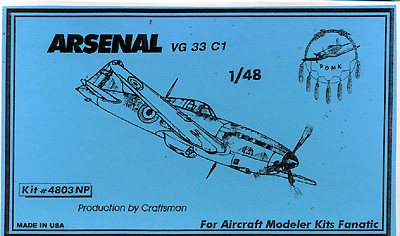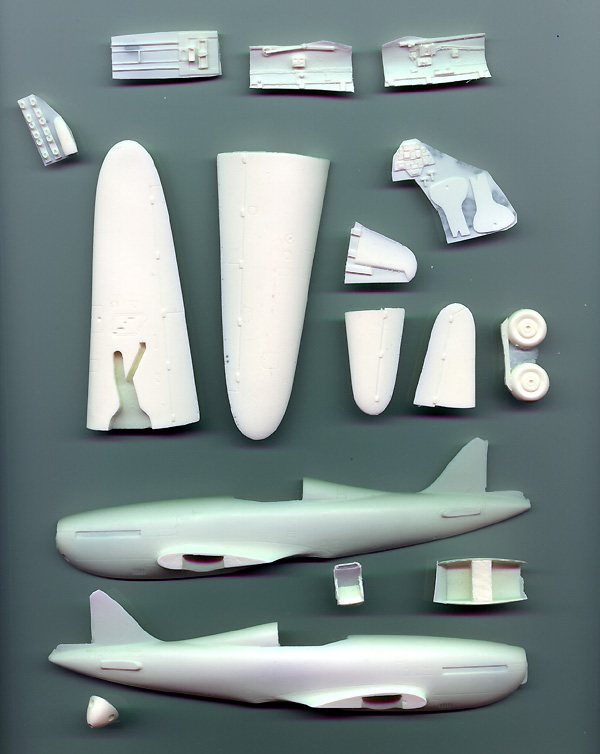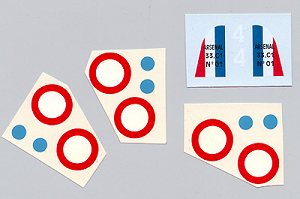
|
KIT: |
Pend Oreille 1/48 Arsenal VG.33 C1 |
|
KIT # |
4803 |
|
PRICE: |
$35.00 |
|
DECALS: |
One aircraft |
|
REVIEW & |
|
|
NOTES: |
Kit's resin with white metal and vac parts. |

|
HISTORY |
Whatever else the French Air Force may have been wanting, it certainly did not lack for aircraft designs on the eve of WW2. Many of these were produced in small numbers before the Armistice, and had little effect on the outcome of the war. One such design was the VG 33 produced by Arsenal.
The VG 30 series were single-seat light fighters made primarily of wood. The production model was the VG 33, which combined the wings of the VG 30 and the fuselage and engine of the VG 31. It was fast and nimble, outperforming the standard French fighter of the day, the MS 406. Armed with one 20mm cannon and four 7.5mm machine guns, it packed a punch disproportionate to its small size.
Nearly 150 were built between 1939 and 1940. Only 19 were airworthy during the few weeks of combat before the Fall of France; the rest lacked engines because of France's inefficient and overtaxed aviation industry's inability to provide them.
|
THE KIT |

 Decals consist of six roundels
with separate blue "dot" inserts - no registration problems here. The rudder stripes carry the legend for VG 33 C1 No. 1. According to the marking guide, this aircraft was painted overall aluminum, while subsequent aircraft received a three color camo over light blue undersides. If you want to do a camouflaged airplane, you'll need to redo the tail stripe decal.
Decals consist of six roundels
with separate blue "dot" inserts - no registration problems here. The rudder stripes carry the legend for VG 33 C1 No. 1. According to the marking guide, this aircraft was painted overall aluminum, while subsequent aircraft received a three color camo over light blue undersides. If you want to do a camouflaged airplane, you'll need to redo the tail stripe decal.
|
CONCLUSIONS |
This looks like a nice little kit, one I'm looking forward to building. It will be a nice departure from the usual suspects ..... It's not one I'd recommend to someone who has not built a resin "garage" kit before, but if you like the oddball, and have some experience and more patience, it's a good deal.
Review kit courtesy of my poor, over-taxed wallet.
If you would like your product reviewed fairly and quickly by a site that has over 1,100 visits a day, please contact me or see other details in the Note to Contributors.